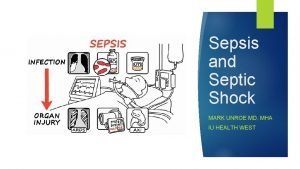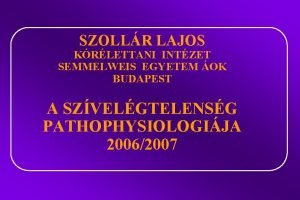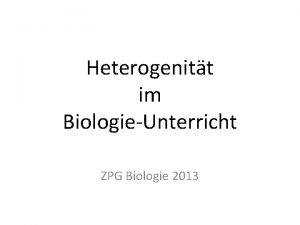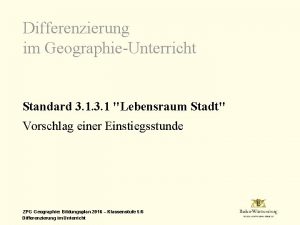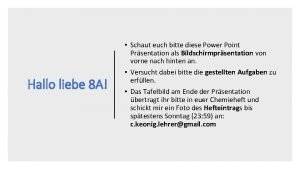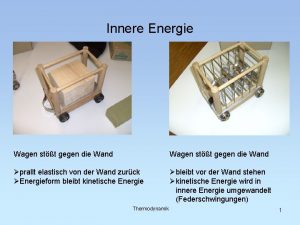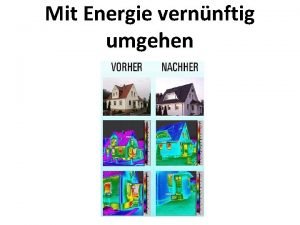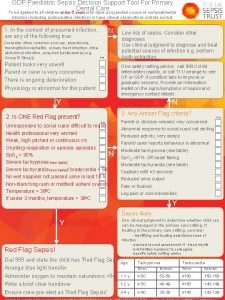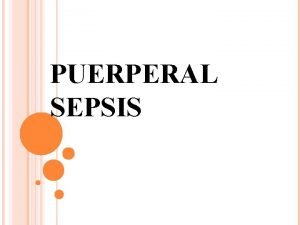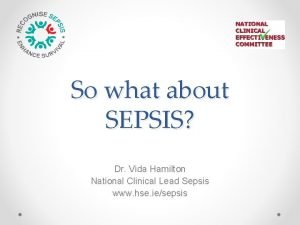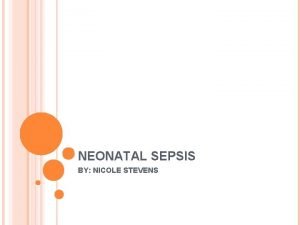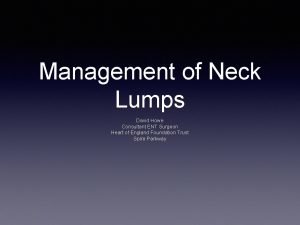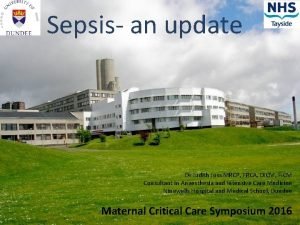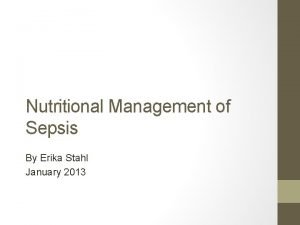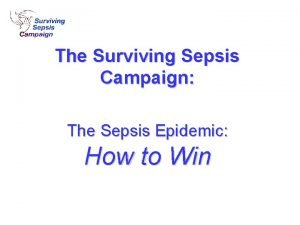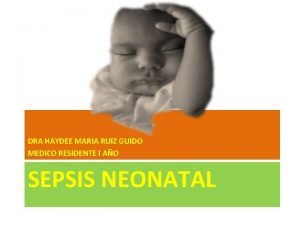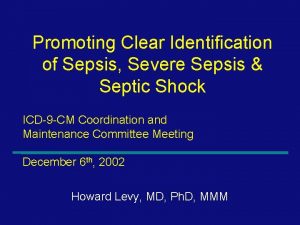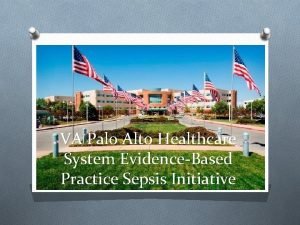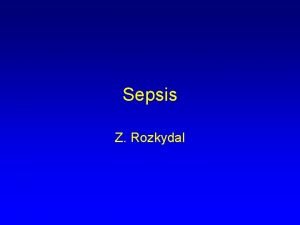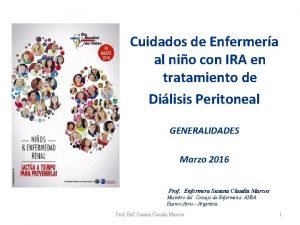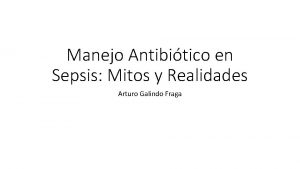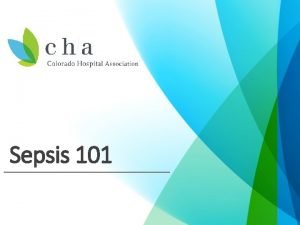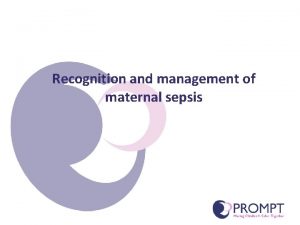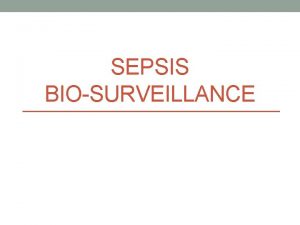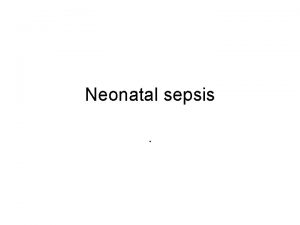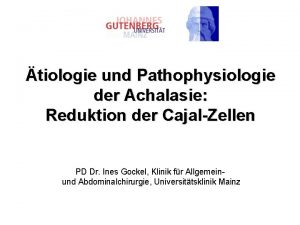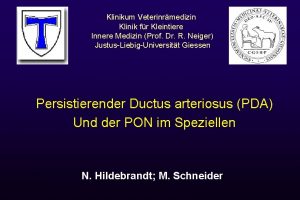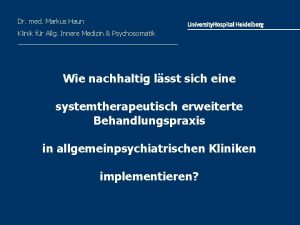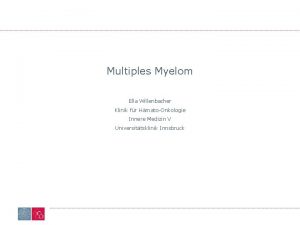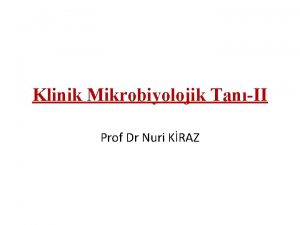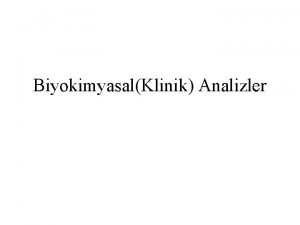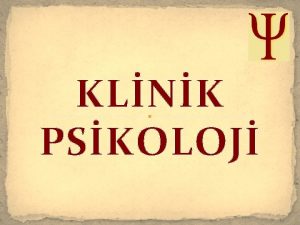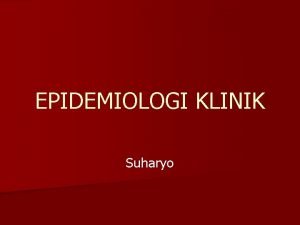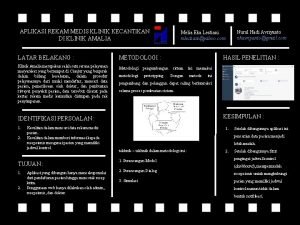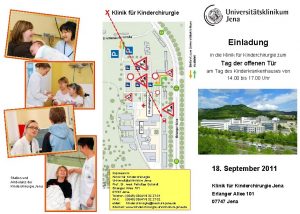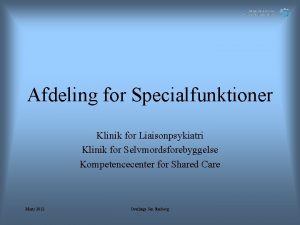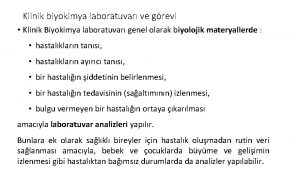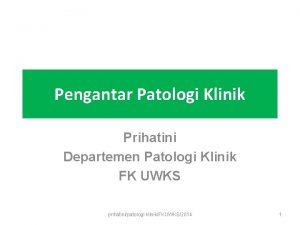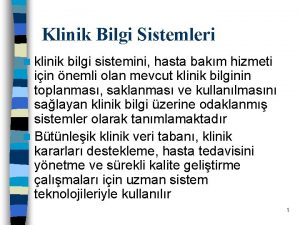Pathophysiologie der Sepsis Sylvia Knapp Klinik f Innere



























- Slides: 27

Pathophysiologie der Sepsis Sylvia Knapp Klinik f. Innere Medizin 1 - Intensivstation 13 i 2 - Med. Univ. Wien

Infektion, Sepsis & SIRS

Pathophysiologie der Sepsis Riedemann et al. Nature Medicine 2003; 9: 517

Ausgangspunkt- primäre Infektion & Sepsis Wheeler, N Engl J Med 1999

Entzündungsmodulation bei Sepsis Lokalisierte Infektion Lokale Entzündung unterstützt ‘host defense’ Gestörte bakterielle Clearance Kompensatorische Mechanismen Reduktion der systemischen Toxizität Fulminante Sepsis Systemische Entzündung erhöht die Mortalität Anti-inflammatorische Zytokine (anti-TNF) Schädlich Immunparalyse Mangelhafte Entzündung prädisponiert für nosokomiale Infektionen

Potentielle, pathopysiologische Anatzpunkte zur Beeinflussung der Sepsis Bacteria PRR (e. g. TLRs) Coagulation system Innate immune cells Complement (e. g. C 5 a) Early inflammatory Mediators (e. g. TNF, IL-1) Late inflammatory Mediators (e. g. HMGB-1) Septic Shock

Wie beginnt die Immunantwort / Entzündung?

Toll-like Rezeptoren Gram+ Bakterien LTA Gram- Bakterien Viren PGN Lipopeptid LAM Zymosan CD 14 Flagellin ds. RNA Cp. G LPS TLR 2 CD 14 TLR 6 TLR 4 TLR 5 Imiquimod TLR 3 TLR 9 TLR 7 ? ? ? TLR 8 TLR 10 TLR 1 My. D 88 IRAK TRAF 6 NFk. B Proinflammatorische Zytokine

Zellwand Gram-positiver Bakterien Toll-like Rezeptor 2 (TLR 2) Lipoteichonsäure Peptidoglykan – Teichonsäure Lipoprotein

TLR 2 -blocking Antikörper reduziert die Entzündungsantwort gegen Gram+ Bakterien control LPS Pam 3 CSK 4 Bacillus subtilis LPS: Lipopolysaccharide LTA: Lipoteichoic Acid NF-B/p 65 nuclear translocation Knapp et al. J. Immunol 2004; 172: 3132 Meng et al. J. Clin. Invest. 2004; 113: 1473

Anti-TLR 2 verbessert Überleben bei Gram+ septischem Schock +1 h: T 2. 5 -0. 5 h T 2. 5 0. 5 – 1 mg T 2. 5 0. 25 mg T 2. 5 Wild type Knapp et al. J. Immunol 2004; 172: 3132 TLR 2 -/- Meng et al. J. Clin. Invest. 2004; 113: 1473

S. pneumoniae Pneumonie in TLR 2 -/-: Kein Einfluss auf Überleben Lunge: Bakterien 6 h 48 h Knapp et al. J. Immunol 2004; 172: 3132

Acinetobacter Pneumonie: TLR 2 hemmt bakterielle Clearance via reduziertem PMN Einstrom Wt TLR 2 -/- Knapp et al. AJRCCM 2006

Entzündungsmodulation via TLR 2 Lokalisierte Infektion Lokale Entzündung unterstützt ‘host defense’ Kein Einfluss auf bakterielle Clearance Kompensatorische Mechanismen Anti-TLR 2 Reduktion der systemischen Toxizität Fulminante Sepsis Systemische Entzündung erhöht die Mortalität Kein Einfluss Immunparalyse Mangelhafte Entzündung prädisponiert für nosokomiale Infektionen

Disseminated Intravascular Coagulation (DIC) und Sepsis Levi. NEJM 1999; 341: 586

Konsequenz der DIC Levi M. NEJM 1999; 341: 586

Angriffspunkte von aktiviertem Protein C VIIIa IXa Tissue factor/VIIa Inhibition der TNF Produktion Inhibiert ‘rolling’ APC PAI-1 Va Xa APC Thrombin Tissue factor/VIIa TAFI Fibrin Profibrinolytisch Hemmt die Gerinnung

Long-term survival – APACHE II score Treatment effect depends on severity of illness n. s. 52. 1% 41. 3% n. s. P=. 002 Significantly improved hospital survival No difference in long-term survival 45. 6% 33. 8% P=. 001 Significantly improved long-term survival when APACHEII >25 at baseline Angus DL et al. Crit Care Med 2004, 32: 2199

Rh APC improves outcome in Severe Community Acquired Pneumonia (CAP) % survival 80% 68. 2% 67. 1% 61. 2% 35, 6% mit severe CAP Laterre et al. Crit Care Med, 2005; 33: 952

Thrombomodulin (und damit a. PC) hat keinen Einfluss auf Pneumokokken- oder Klebsiellen-Pneumonie S. pneumoniae Klebsiella Thrombomodulin (TM): membrane protein that forms complexes with thrombin Thrombin-TM complex converts Protein C to activated Protein C (facilitated by EPCR) TM and EPCR Rijneveld, A. W. et al. Blood 2004; 103: 1702

Verschiedene Erreger …. Sepsis

Genexpression bei Gram+ bzw. Gram- Infektion Feezor et al. Clin Inf Dis 2005, 41: S 427

Zytokin-Dynamik bei Endotoxämie 4 ng/kg LPS i. v.

Genexpressionsprofil in Leukozyten bei Endotoxämie Calvano SE et al. Nature 2005; 437: 1032

Genexpressionsprofil in Leukozyten bei Endotoxämie Calvano SE et al. Nature 2005; 437: 1032

www. gluegrant. org Anti-inflammatorische Mediatoren Pseudomonas (nosokomial) S. aureus Pseudomonas (CF) E. coli Pro-inflammatorische Mediatoren

Zukunft: Individualisierte, Patienten-bezogene Diagnose & Therapie • • 1. “Bedside tests” – Infektion oder SIRS? – Phase: Hyper- or Hypoinflammation? – Erreger? – Grunderkrankung? 2. Anti- or pro-inflammatorische Therapie?
 Dr mark a unroe
Dr mark a unroe Pathophysiologie semmelweis
Pathophysiologie semmelweis Innere schulentwicklung
Innere schulentwicklung Zpg biologie
Zpg biologie Innere differenzierung stadt
Innere differenzierung stadt Innere energie
Innere energie Innere energie teilchenmodell
Innere energie teilchenmodell Energieaufwertung
Energieaufwertung Innere energie
Innere energie Instrumentalitätstheorie
Instrumentalitätstheorie Qualitative quantitative differenzierung
Qualitative quantitative differenzierung Einatmung ausatmung
Einatmung ausatmung Gdp sepsis decision support tool
Gdp sepsis decision support tool Adverse events in hospital
Adverse events in hospital Give 3 take 3 sepsis
Give 3 take 3 sepsis Neonatal sepsis nelson pediatrics
Neonatal sepsis nelson pediatrics L
L Thyroglossal cyst in adults
Thyroglossal cyst in adults Escala qsofa
Escala qsofa Sepsis dietary management
Sepsis dietary management Sepsis hour 1 bundle
Sepsis hour 1 bundle Vertical y horizontal
Vertical y horizontal Sepsis
Sepsis Sepsis care near palo alto
Sepsis care near palo alto Hypotensis
Hypotensis Pae sepsis neonatal
Pae sepsis neonatal Sepsis
Sepsis How do you get sepsis
How do you get sepsis
